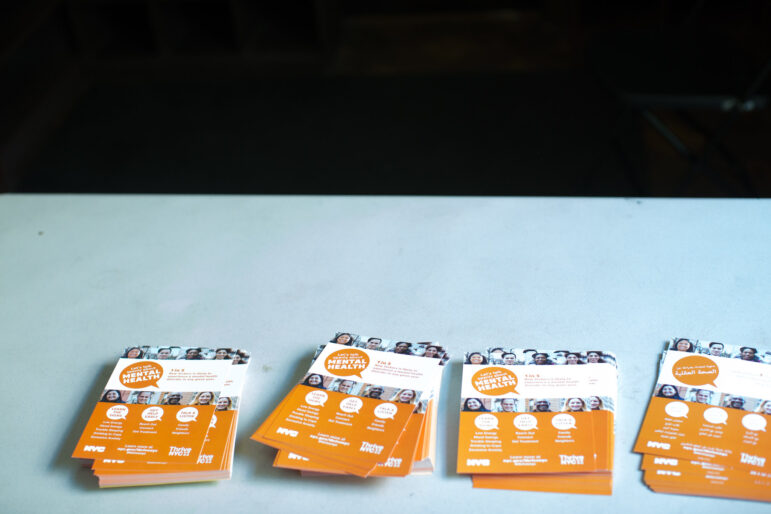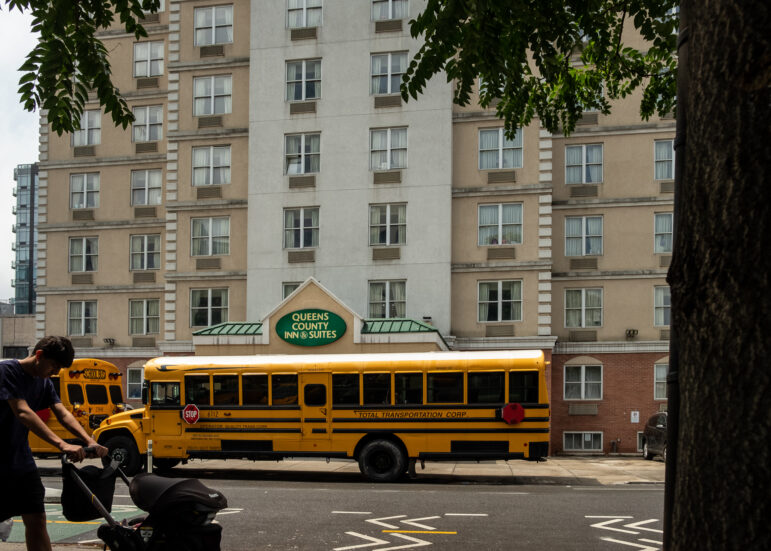
Cdogsimmons
Rikers Island
Yesterday, the de Blasio administration turned over a momentous decision about the liberty of thousands of people in confinement – 90 percent of whom are Black or Latino – to an anesthetized process about architecture, square footage, and building height. On Monday, the Department of City Planning rubber-stamped the Department of Corrections’ Uniform Land Use Review Procedure (ULURP) application for the plan to build four new “Borough-Based” jails. But the ULURP decision-makers cannot avoid the real question at stake: Will the city recommit to incarceration for generations to come, or will New Yorkers chart a new course that redefines safety as resources dedicated to addressing poverty, interpersonal harm with restorative justice, and holistic mental health systems?
How a call to close Rikers became a jails development project
After Kalief Browder’s death following 33 months on Rikers as a teen personalized years of community organizing , public officials began to assert control over grassroots demands to close Rikers immediately. In February 2016, Melissa Mark-Viverito, then-Speaker of the City Council, created an independent commission led by former New York State Chief Judge Jonathan Lippman, composed of executives of large nonprofits and foundations, private attorneys, and academics to study the City’s criminal justice system. In spring 2017, Mayor Bill de Blasio, sensitive to mounting political pressure, pivoted from his longstanding refusal to shutter the jail complex and trumped the Lippman Commission with his own announcement that the city would close Rikers in 10 years.
The mayor’s published plan, like the Lippman Commission report, includes appeasing and vague language about ending mass incarceration and reforms like modifying cash bail and diverting certain pre-trial defendants into city-approved programs. In it, the urgent call to close Rikers is reduced to a tentative ”goal” left in the hands of an unknown, future mayor of New York City. The plan’s stated purpose is to reduce the number of people in city jails, but its central component is building more jails.
The de Blasio administration is now moving urgently not to close Rikers but to secure land use approvals to build four new jails in Brooklyn, Manhattan, Queens, and the Bronx with the capacity to cage 6,000 people each day and tens of thousands every year.
The wrong plan, the wrong process
This Monday’s certification of the Department of Corrections’ application began ULURP’s tightly-timed seven-month process for a string of public bodies and officials, each with increasing power, to say yea or nay to rezoning locations in Manhattan, Queens, Brooklyn, and the Bronx for the Mayor’s massive new jails. First, Community Boards in all four boroughs will each make an advisory, non-binding recommendation after holding public hearings. Borough Presidents Gale Brewer, Melinda Katz, Eric Adams, and Ruben Diaz, Jr. will then weigh in. This summer, the City Planning Commission will hold public hearings and cast the first binding vote on the plan. By late summer or early fall, City Council can then call the project up for a vote and hold the last set of public hearings. Council members will likely follow the tradition of voting in deference to the wishes of members representing the districts chosen for the proposed new jails: Margaret Chin, Karen Koslowitz, Stephen Levin, and Diana Ayala. ULURP, a narrow public disclosure process for discretionary land-use decisions (like changes in zoning or the sale of city-owned land), will constrain their decision about incarceration to considerations of zoning and certain impacts on light, air, transportation, and other infrastructure, and other aspects of the built environment.
Public officials use ULURP’s legal requirement for public input to tout the false hope of inclusion and transparency in planning decisions. But ULURP is not a planning process that considers the range of needs and resources for the city’s future and its neighborhoods – it is the review of fully-formed projects that are the result of years of planning. And when the public questions the underlying plans and policies, they are often derided as derailing the process by raising issues too late or outside ULURP’s purview.
The de Blasio administration may argue that it provided ample opportunity to participate in the planning of the Borough-Based jails through the “comprehensive and strategic engagement” of Neighborhood Advisory Committees (NACs). But NAC members were selected by the city, their meetings about the new jails development plan are closed to the public and press,and official minutes are curated by the city. The mayor’s office showcases the NACs as going “beyond what is required as part of public review,” but responds to criticism of their opacity by pointing back to ULURP as the avenue for public involvement.
This technocratic process is no place to decide whether New York City will continue to put human beings in cages. Zoning does not offer avenues to address city jails as sources of human rights violations or how our resources could be better used to provide safety instead of building jails. New Yorkers will join the ULURP hearings to testify on the human impact of incarceration, but the decision-makers will turn their attention to a set of questions about construction impacts, shadows, and sightlines. Data points about number of “beds” and length of “stays” will sanitize this discussion, as if it were about new hotels instead of cages that determine the lives of individuals for years to come.
The Mayor has, moreover, politically positioned his plan for new jails as the only way to close Rikers – and opposition to new jail construction as a decision to keep Rikers open. For instance, just this month, Queens Borough President Melinda Katz and Bronx Borough President Ruben Diaz Jr., called for halting the new jails plan. The mayor’s office’s swift response was “we won’t delay our mission to close Rikers,” even though the de Blasio administration’s plan includes no such commitment.
The land-use case against new jails
The city is sending contradictory messages that the jails development project is on the one hand a standard ULURP application about buildings and on the other a plan for the future of Rikers. In reality, it is neither. The city should withdraw the ULURP application immediately. If the application is not withdrawn, the reviewing bodies must vote no.
First, those voting on the proposed jails development plan can only consider the ULURP application in front of them: a zoning change to allow the construction of four new jails. Although the project documents make reference to the city’s roadmap to closing Rikers, the zoning application includes no mechanism nor timeline to close the Rikers jails. This land-use decision only determines whether the city adds jail cells – or not.
Second, those interested in taking a progressive view of land-use planning and environmental impact review would reject this application on the basis that the city did not adequately disclose and analyze the potential to meet its stated goal of reducing the jail population under the no-build scenario through policy alternatives under city control. Abolitionist strategies such as ending the local practice of pre-trial detention , reducing arrests, and divesting city funds from carceral systems and investing in community-controlled resources are what will reduce the number of people in jail.
Finally, Community Board members, Borough Presidents, City Planning Commissioners, and Council members have an opportunity – and imperative – to get to the heart of what land use planning is about: how we should use our limited land resources to advance the public interest. Given the extensive evidence that incarceration harms human beings and whole communities, that every new jail built, regardless of location, re-enacts those abuses, there is no justification to use public land to cage human beings.
Public officials who do not want to make incarceration part of their legacy have no choice but to oppose this plan.
Get the best of City Limits news in your inbox.
Select any of our free weekly newsletters and stay informed on the latest policy-focused, independent news.
We all want a safe city. But many of the social problems we attempt to “solve” through incarceration don’t originate with individuals; they are the effects of structures within our society that reproduce domination, exploitation, and violence. The borough-based jails construction plan would cost the city at least $10 billion over the next 10 years, which could easily increase given the size of the project. This money should be spent on building community-based mental health facilities, repairing NYCHA, ending homelessness, providing unarmed first responders, and practicing restorative and transformative justice processes that actually heal communities and give them what they need to thrive.
Samantha Johnson is a community organizer and No New Jails NYC member. Sylvia Morse is an urban planner. M.J. Williams is an attorney and No New Jails NYC member.








2 thoughts on “Opinion: Decisions on Jails are about People, Not Zoning”
Pingback: Why the plan to replace Rikers, or reform any prison, is doomed to perpetuate the problem - The Black Youth Project
Pingback: Uptown Community gathers to defend vital Allen Psych unit – Save Allen Psych